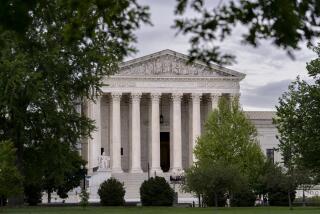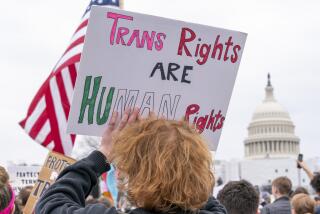Forget history. Forget safety. The Supreme Court prizes unfettered gun rights above all else

- Share via
After the recent mass shootings in Uvalde, Texas, and Buffalo, N.Y., and so many other places, it is deeply distressing that the Supreme Court on Thursday dramatically expanded gun rights and limited the ability of the government to prevent gun violence.
In a 6-3 decision, written by Justice Clarence Thomas, the court declared unconstitutional a New York law that limited the ability to have concealed weapons in public. The decision is, by far, the most expansive reading of the 2nd Amendment in American history, and its approach will put countless laws regulating firearms in serious jeopardy.
The case, New York State Rifle and Pistol Assn. vs. Bruen, involved a New York law adopted in 1911 that prohibits having concealed weapons in public without a permit. Under the law, a person can obtain a concealed weapons permit only by demonstrating “a special need for self-protection.” California has a similar law that requires a permit for possessing a concealed weapon. Getting such a license requires, among other things, showing that having a concealed weapon is necessary because the person or a family member is in danger. These laws recognize that concealed weapons in public pose a grave danger, including to law enforcement officers.
The court, splitting along ideological lines, declared the New York law to violate the 2nd Amendment, which says: “A well regulated Militia, being necessary to the security of a free State, the right of the people to keep and bear Arms, shall not be infringed.”
From 1791 until 2008, the Supreme Court never once declared unconstitutional any law — federal, state, or local — as violating the 2nd Amendment. In the handful of cases about gun rights, the court declared that the amendment addressed only the right to have guns for militia service.
In June 2008, the court for the first time declared a gun regulation unconstitutional in striking down a District of Columbia ordinance that prohibited possession of handguns. Justice Antonin Scalia, writing for the court in a 5-4 decision, stated that the 2nd Amendment protects the right of people to have guns in their homes for the sake of security. The decision went no further than that.
On Thursday, the court decided that the 2nd Amendment — after more than 230 years of interpretation — now contains the right to carry a concealed gun outside the home, and that any requirement to show need is unconstitutional.
This expansive ruling now puts countless other gun regulations in jeopardy, including laws that have been in place since the 1800s. Thomas’ opinion ignored or discounted all constitutional analysis and historical evidence about the 2nd Amendment prior to the 2008 decision. His reasoning was blinkered to 1791: “Only if a firearm regulation is consistent with this Nation’s historical tradition may a court conclude that the individual’s conduct falls outside the Second Amendment’s ‘unqualified command.’”
Worse, his decision makes this right nearly absolute — without balancing the state’s compelling interest in maintaining such a regulation, such as protecting public safety.
For other constitutional rights, such as freedom of speech or the right to privacy, a government action is constitutional if it is shown to be necessary to achieve a compelling purpose. Yet the conservatives on the court now expressly reject that approach for the 2nd Amendment, providing far more protection for this right than virtually all other rights in the Constitution.
No constitutional analysis can make sense when it focuses exclusively on history, such as the conditions of 1791 when the 2nd Amendment was adopted, to decide what regulations can be allowed now in a vastly different society. The conservative majority believes that the 2nd Amendment’s protections are not limited to weapons that existed in the 18th century, but that the states’ ability to regulate is restricted to what they could do at that time. Besides, as Justice Stephen G. Breyer lays out in his dissent, there is a long history of government regulation of concealed weapons.
A purely historical focus also ignores contemporary needs. The Thomas opinion pays no attention to the current crisis of gun violence and the public’s compelling interest in regulating concealed weapons, perhaps more now than ever.
As Breyer pointed out in the dissent, “in 2020, 45,222 Americans were killed by firearms .... Since the start of this year (2022), there have been 277 reported mass shootings — an average of more than one per day.” He notes that a study examining the 33 states that adopted laws requiring issuance of concealed weapons permits between 1981 and 2007 found that the “adoption of those laws was associated with a 13%–15% increase in rates of violent crime after 10 years.”
For decades, conservatives professed a desire for judicial restraint. Striking down a century-old New York law and expanding gun rights is stunning judicial activism. At a time when mass shootings make government action to regulate guns imperative, the court has decided that its reading of the Constitution prohibits states from doing what’s necessary to protect their residents from more slaughter.
Erwin Chemerinsky is dean of the UC Berkeley School of Law and a contributing writer to Opinion. He is the author, most recently, of “Presumed Guilty: How the Supreme Court Empowered the Police and Subverted Civil Rights.”
More to Read
A cure for the common opinion
Get thought-provoking perspectives with our weekly newsletter.
You may occasionally receive promotional content from the Los Angeles Times.









